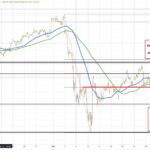
Navigating the Oil Price Drop: April 2025 Insights and Future Trends
Tháng 4 28, 2025Earnings Week: Insights from Major Dow Jones Stocks
Tháng 4 28, 2025Understanding Recent Developments in U.S. Treasury Borrowing: A 2025 Outlook
The U.S. Treasury’s recent announcement regarding its borrowing estimates for the second quarter of 2025 has caught the attention of economists and investors alike. With plans to borrow $514 billion, the Treasury indicates a significant uptick in borrowing needs compared to $202 billion estimated for the same period in 2024. Such fluctuations highlight the economic uncertainties that are increasingly becoming a reality for many stakeholders.
Economic Context Surrounding Increased Borrowing
This anticipated increase in borrowing isn’t just a number—it’s a reflection of wider economic trends that are unfolding in the U.S. As we move closer to 2025, indicators suggest that the nation may face a potential recession. GDP growth projections are cautious, with signs indicating a possible contraction in economic activity during that quarter. This looming uncertainty can often lead to increased risk aversion among investors, as evidenced by the rising spreads observed in high-yield bonds. Market volatility tends to elevate concerns, compelling investors to reassess their strategies to mitigate risk. For further insights on how to navigate investment strategies during periods of economic uncertainty, one can refer to the blog discussing key investment mistakes to avoid.
Impact of Treasury Yields on Borrowing Costs
Additionally, the shifting landscape of interest rates, particularly the 10-year Treasury yield, further complicates the borrowing scenario. Recently, this yield has demonstrated considerable volatility, dipping to approximately 3.9%. Such fluctuations impact not only government borrowing costs but also influence corporate borrowing. As rates change, companies are prompted to reassess their investment plans, particularly in light of expectations for a cooling economy. This aligns with the advice found in Barry Ritholtz’s blog about avoiding investment mistakes, which emphasizes the importance of overcoming psychological missteps that arise in uncertain markets, as discussed in his investment advice blog.
Investment Opportunities Amidst Uncertainty
Despite these uncertainties and the broader tumult in the economic landscape, fixed-income markets are positioned to present attractive opportunities for long-term investors. With yields appearing more enticing against a backdrop of volatile markets, many are finding value in these assets. However, investors are not oblivious to the cloud of uncertainty hovering over the economy. In times when risk sentiment shifts, commodities like gold tend to experience increased demand as individuals seek to protect their capital from fluctuating market conditions. Observers of market behavior might find it beneficial to analyze recent stock movements to better understand potential investment opportunities. A recent blog on top stock movements can provide valuable insights during such periods.
Conclusion
In summary, the U.S. Treasury’s projection of increased borrowing in Q2 2025 underscores a complex economic environment characterized by heightened risk and uncertainty. As economic indicators suggest a possible downturn, both individual and institutional investors need to navigate these choppy waters with diligence and foresight. For stakeholders engaged in Treasury securities or broader fixed-income investments, understanding these trends will be crucial for making informed decisions in the months ahead. Keeping a pulse on these developments is essential for identifying opportunities as the financial landscape evolves, much like the strategies outlined in discussions on the enduring relevance of value investing, which suggest maintaining a long-term mindset amidst uncertainties, as highlighted in the blog on value investing.
